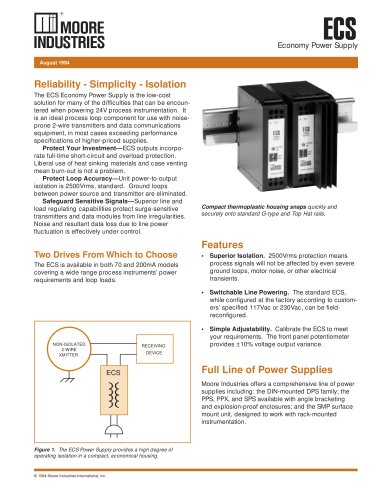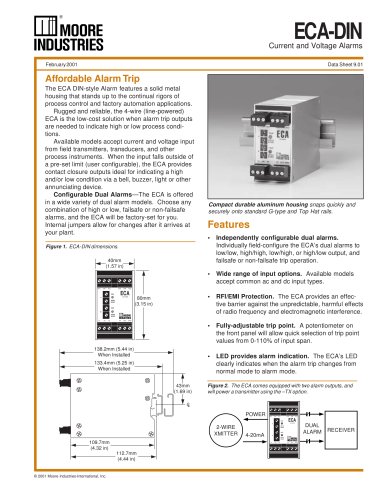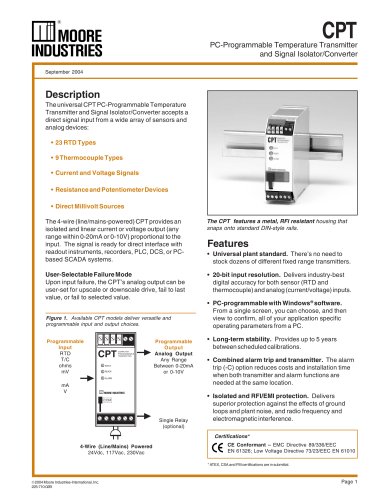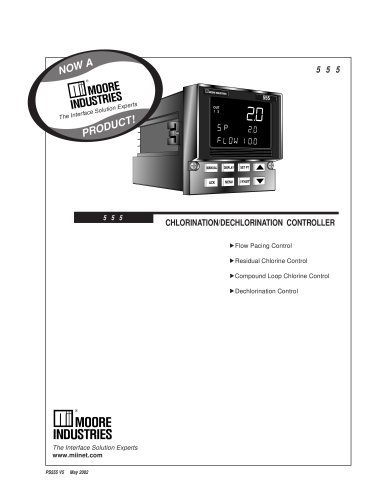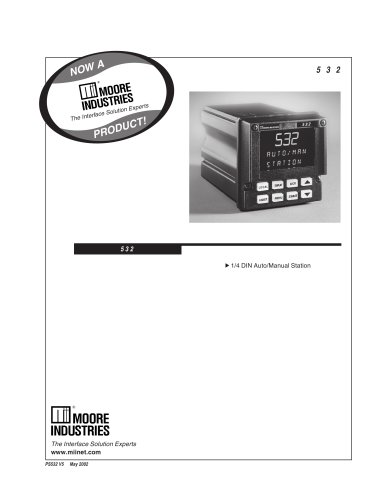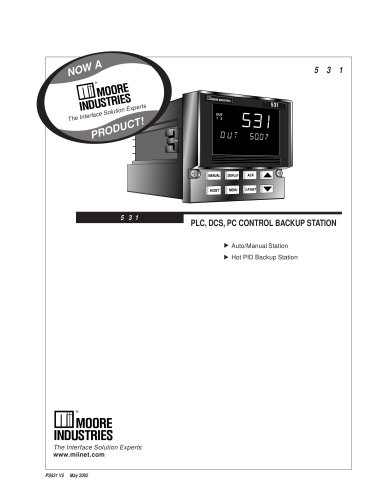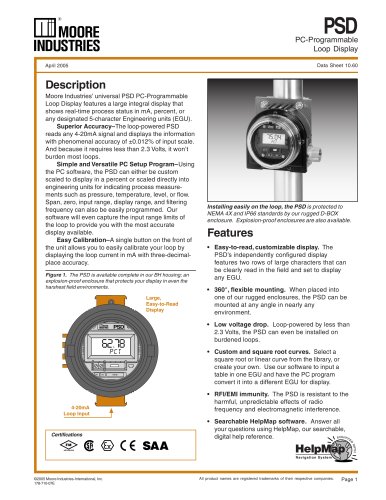
Catalog excerpts

June 2006 Something happensa signal peaks or fallsחandyou need to know. A limit alarm trip can trigger the response needed to maintain normal, and safe, operations. A limit alarm trip monitors a process signal (such as one representing temperature, pressure, level or flow) and compares it against a preset limit. If the process signal moves to an undesirable high or low condition, the alarm activates a relay output to warn of trouble, provide on/off control or institute an emergency shutdown.While limit alarm trips are best known as a sure way toactivate a warning light, siren or bell when a process problem occurs, they are also called upon to do much more. In fact, todays highly flexible and versatile alarm trips can be found working in a wide range of applications, under an impressive list of pseudonyms. Here are just some: > Independent ғhard alarm trips can be usedto warn of trouble, provide on/off control ortrigger an emergency shutdown. Because they are hard-wired into the process and provide relay outputs, independent limit alarm trips are often referred to as ԓhard alarms. This term differentiates a ԓhard alarm trip from the software- implemented alarm (a ԓsoft alarm) which is found within a Distributed Control System (DCS) or a programmable logic controller (PLC). Hard-Wired AlarmTrip AlarmOn/Off Controller Limit SwitchTrip Amplifier or Trip AmpRange Alarm Safety ShutdownLevel ControllerSafety Interlock Redundant ShutdownTemperature, Voltage or Current AlarmHigh/Low Controller High Integrity SwitchEmergency ShutdownCurrent or Temperature Switch Sensor Failure MonitorComparatorTemperature Averaging Alarm Supervisory AlarmDifferential AlarmRate-of-Change Alarm Shutdown AlarmFailsafe AlarmFault Monitor Failsafe ShutdownWindow Alarm > Most every plant performs alarm functions using ԓsoft alarms within their DCS or PLC. As such, some might argue that ԓhard alarms are not necessary. However, ԓhard alarm trips complement DCS and PLC systems > Figure 1. Limit alarm trips monitor a process signal and send oneor more relay outputs when a monitored signal exceeds preset highand/or low limits (dual high/low alarm configuration shown). DUAL HIGH/LOW ALARM TRIP Change in Input Signal Change over Time The Interface Solution Experts ԕ www.miinet.com > 2006 Moore Industries-International, Inc. Page 1 size="-1">
Open the catalog to page 1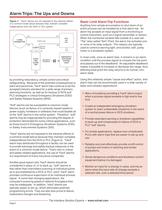
+PSՖPS24V+ININ+IN DCSORPLC 2-WIRE TRANSMITTER > 4-20mA Loop 250 ohmResistor 1-5V EMERGENCYSHUTDOWNSYSTEM,(ESD) "HARD" LIMITALARMTRIP > EmergencyShutdown
Open the catalog to page 2
High and Low Limit Alarms > Figure 4. Multiple relay outputs allow one limit alarm trip to monitorcombinations of high, low and input fault conditions A high or low limit alarm is triggered when the value of thevariable being measured exceeds a preset high or low alarm trip point (Figure 3). This type of alarm trip monitors temperature, pressure, level, flow, position or status variables, and is typically used to warn of unwanted process conditions or to provide emergency shutdown. . > Annunciator Limit AlarmTrip Figure 3. Dual high/low limit alarm trip with deadband to reduce relaychatter...
Open the catalog to page 3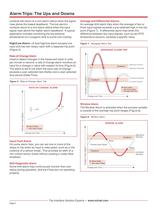
High/Low Alarm A dual high/low alarm accepts oneinput and has two relays, each with a separate trip point (Figure 3). contacts will return to a non-alarm status when the signalrises above the lowest deadband. The low alarmגs contacts return to a non-alarm status when the input signal rises above the higher alarm deadband. A typical application includes monitoring the low extreme temperature of a cryogenic tank to avoid over-cooling. Average and Differential Alarms An average limit alarm trips when the average of two orthree input signals exceeds a pre-selected high or low trip point (Figure...
Open the catalog to page 4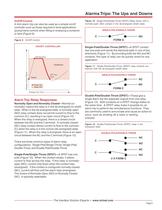
On/Off Control > Figure 10. Single-Pole/Single-Throw (SPST) Relay shown with anormally-open (NO) contact in the de-energized (shelf) state A limit alarm trip can also be used as a simple on/off controller such as those required in level applications (pump/valve control) when filling or emptying a container or tank (Figure 9). . > SINGLE-POLE/SINGLE-THROW CNO > Figure 9. On/Off Control . FORM A > ON/OFF CONTROLLER Single-Pole/Double-Throw (SPDT) A SPDT contacthas one pole and sends the electrical path in one of two directions (Figure 11). By providing both the NO and NC contacts, this type...
Open the catalog to page 5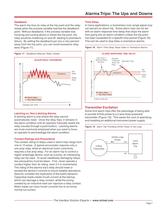
Deadband Time Delay The alarm trip fires its relay at the trip point and the relayresets when the process variable reaches the deadband point. Without deadband, if the process variable was hovering and cycling above or below the trip point, the relay would be chattering on and off, leading to premature failure. By setting the deadband just one or two percent away from the trip point, you can avoid excessive relay wear (Figure 17). In many applications, a momentary over-range signal may not warrant an alarm trip. Some alarm trips can be set with an alarm response time delay that stops the...
Open the catalog to page 7All Moore Industries catalogs and technical brochures
-
SB
2 Pages
-
LH
2 Pages
-
TMZ
8 Pages
-
CPT (Current/Voltage Input)
8 Pages
-
CCS - Cable Concentrator System
12 Pages
-
HIM HART® Interface Module
8 Pages





